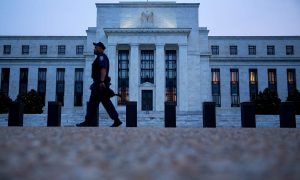
BEIJING—Chinese exports fell again in August as weak demand and global uncertainty continued to weigh on the world’s second-largest economy, though the decline wasn’t as steep as in July and imports rose for the first time in nearly two years.
Exports slid 2.8% last month over year-earlier levels, following a decline of 4.4% in July, the General Administration of Customs said Thursday. The median forecast from 15 economists polled by The Wall Street Journal was for a 4% export decline.
Imports in August increased by 1.5% from a year earlier, reversing a 12.5% slump in July. The rise, which beat forecasts, was largely a reflection of higher prices for raw materials with little sign that domestic demand, consumption or investment have picked up.
China’s trade surplus narrowed slightly in August to $52.05 billion, below economists’ median forecast of $59.40 billion, compared with $52.31 billion in July.
“In general, the figures are quite positive for both exports and imports,” said Standard Chartered Bank Ltd. economist Shuang Ding. “But domestic demand is still more or less the same. I don’t expect any major pickup.”
Export comparisons were helped somewhat by the calendar as last month saw two more working days than August 2015. The yuan also depreciated by around 7% year on year in July against a basket of currencies, which made Chinese exporters more competitive when signing August contracts, Mr. Ding said.
China’s customs agency said exports should improve by the fourth quarter, citing improved confidence, rising orders and declining costs seen in a recent online survey it conducted. But economists said exports, a once-vaunted growth engine for China, are likely to remain subdued for the foreseeable future.
Qingdao Duobao Furniture Trade Co., an exporter of glassware and glass tables in the eastern China port city of Qingdao, said it expects its sales to decline in the second half on soft global demand after a 20% drop in the first half.
While the weaker yuan has helped it offer more competitive prices, the company said profit margins are still getting squeezed by rising labor costs and weak demand. Qian Yong, the company’s general manager said she hoped Beijing would negotiate more free-trade agreements that reduce tariffs so exporters can better compete in foreign markets.
“China’s economy will likely slow down for quite a long time,” she added. “It’s almost impossible to expect a return to the boom conditions of the past.”
Maersk Line, the world’s largest container shipping firm, announced plans last month to halt service to 10 smaller Chinese ports as Chinese exports weaken. The World Trade Organization has downgraded its 2016 forecast for global trade growth to 2.8%, the fifth year of growth below 3%. This compares with average annual global trade growth of over 7% between 1990 and 2008.
Capital outflows have eased in recent months after a flood of capital left the country late last year and early in 2016. On Wednesday, China reported that its foreign-exchange reserves fell by $160 billion as of the end of August, compared with July levels, to reach $3.19 trillion.
But companies are likely to continue using trade deals to move money out of China, which imposes strict capital controls, economists said.
One way to do this is by inflating on documents the value of imports from Hong Kong. Imports from the territory, whose economy is separate from the mainland’s, rose 14.3% year on year last month. While this is less than prior months, it is still significantly higher than the growth of overall imports.
China-Hong Kong trade is a “channel of speculative flows,” said investment bank Natixis, NTXFY 0.03 % part of France’s Groupe BPCE, in a report. As long as the market expects the yuan to depreciate against the dollar, “there will be outflow of funds,” Natixis added.
—Liyan Qi contributed to this article.
Click here to view original web page at www.wsj.com












